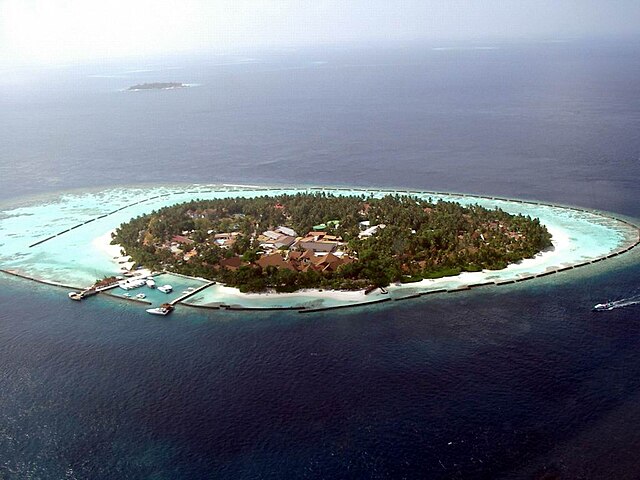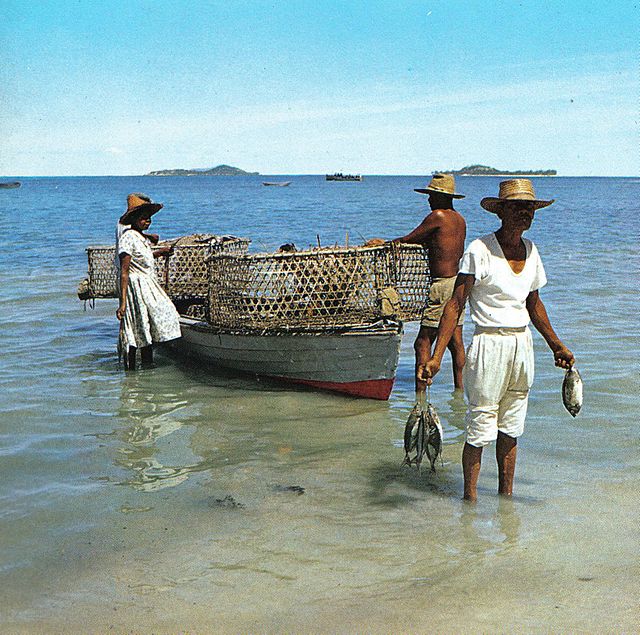Top Qs
Timeline
Chat
Perspective
User:Brontesmithclass/Climate change and fisheries
From Wikipedia, the free encyclopedia
Remove ads
| This is the sandbox page where you will draft your initial Wikipedia contribution.
If you're starting a new article, you can develop it here until it's ready to go live. If you're working on improvements to an existing article, copy only one section at a time of the article to this sandbox to work on, and be sure to use an edit summary linking to the article you copied from. Do not copy over the entire article. You can find additional instructions here. Remember to save your work regularly using the "Publish page" button. (It just means 'save'; it will still be in the sandbox.) You can add bold formatting to your additions to differentiate them from existing content.
|
Remove ads
Article Draft
Climate Change and Fisheries affect one another, this relationship between these affects are backed by strong global evidence.[1] Although these effects vary in the context of each fishery and the many pathways that climate change affects them individually. Rising ocean temperatures[2] and ocean acidification[3] are radically altering marine aquatic ecosystems, while freshwater ecosystems are being impacted by changes in water temperature, water flow, and fish habitat loss.[4] Climate change is modifying fish distribution[5] and the productivity of marine and freshwater species.
The impacts of climate change on ocean systems has impacts on the sustainability of fisheries and aquaculture, on the livelihoods of the communities that depend on fisheries, and on the ability of the oceans to capture and store carbon (biological pump). The effect of sea level rise means that coastal fishing communities are significantly impacted by climate change, while changing rainfall patterns and water use impact on inland freshwater fisheries and aquaculture.[6]
Remove ads
Role of oceans

Oceans and coastal ecosystems play an important role in the global carbon cycle and have removed about 25% of the carbon dioxide emitted by human activities between 2000 and 2007 and about half the anthropogenic CO2 released since the start of the Industrial Revolution. Rising ocean temperatures and ocean acidification means that the capacity of the ocean carbon sink will gradually get weaker,[8] giving rise to global concerns expressed in the Monaco Declarations.[9] and Manado[10] Healthy ocean ecosystems are essential for the mitigation of climate change.[11] Coral reefs provide habitat for millions of fish species and with no change it can provoke these reefs to die.[12]
Remove ads
Impact on fish production
Summarize
Perspective
The rising ocean acidity makes it more difficult for marine organisms such as shrimp, oysters, or corals to form their shells – a process known as calcification. Many important animals, such as zooplankton, that forms the base of the marine food chain have calcium shells. Thus the entire marine food web is being altered – there are ‘cracks in the food chain’.[13] As a result, the distribution,[14] productivity, and species composition of global fish production is changing,[15] generating complex and inter-related impacts[16] on oceans, estuaries, coral reefs, mangroves and sea grass beds that provide habitats and nursery areas for fish. Changing rainfall patterns and water scarcity is impacting on river and lake fisheries and aquaculture production.[17][18] After the Last Glacial Maximum of about 21,000 years ago, the global average air temperature has risen approximately 3 degrees, leading to an increase in sea temperatures.[19]
Fish catch of the global ocean is expected to decline by 6 percent by 2100 and by 11 percent in tropical zones. Diverse models predict that by 2050, the total global fish catch potential may vary by less than 10 percent depending on the trajectory of greenhouse gas emissions, but with very significant geographical variability. Decreases in both marine and terrestrial production in almost 85 percent of coastal countries analysed are predicted, varying widely in their national capacity to adapt.[20]
Fish populations of skipjack tuna and bigeye tuna are expected to be displaced further to the east due to the effects of climate change on ocean temperatures and currents.[21] This will shift the fishing grounds toward the Pacific islands and away from its primary owner of Melanesia, disrupting western Pacific canneries, shifting tuna production elsewhere, and having an uncertain effect on food security.[22]
Species that are over-fished, such as the variants of Atlantic cod, are more susceptible to the effects of climate change. Over-fished populations have less size, genetic diversity, and age than other populations of fish.[23] This makes them more susceptible to environment related stress, including those resulting from climate change. In the case of Atlantic cod located in the Baltic Sea, which are stressed close to their upper limits, this could lead to consequences related to the population's average size and growth.[24]
Due to climate change, the distribution of zooplankton has changed. Cool water cope-pod assemblages have moved north because the waters get warmer, they have been replaced by warm water cope-pods assemblages however it has a lower biomass and certain small species. This movement of copepods could have large impacts on many systems, especially high trophic level fish.[25] For example, Atlantic cod require a diet of large cope-pods but because they have moved pole-wards morality rates are high and as a result the recruitment of this cod has plummeted[26]
Remove ads
Impact on fishing communities
Summarize
Perspective

Coastal and fishing populations[27] and countries dependent on fisheries[28] are particularly vulnerable to climate change. Low-lying countries such as the Maldives[29] and Tuvalu are particularly vulnerable and entire communities may become the first climate refugees. Fishing communities in Bangladesh are subject not only to sea-level rise, but also flooding and increased typhoons. Fishing communities along the Mekong river produce over 1 million tons of basa fish annually and livelihoods and fish production will suffer from saltwater intrusion resulting from rising sea level and dams.[30] In rural Alaska, residents of the Noatak and Selawik villages struggle with unpredictable weather, changes in fish abundance and movement, and boat access changes due to climate change.[20] These impacts significantly impact sustainability and subsistence practices.[20]
Fisheries and aquaculture contribute significantly to food security and livelihoods. Fish provides essential nutrition for 3 billion people and at least 50% of animal protein and minerals to 400 million people from the poorest countries.[31] This food security is threatened by climate change and the increasing world population. Climate change changes several parameters of the fishing population: availability, stability, access, and utilization.[32] The specific effects of climate change on these parameters will vary widely depending on the characteristics of the area, with some areas benefiting from the shift in trends and some areas being harmed based on the factors of exposure, sensitivity, and ability to respond to said changes. The lack of oxygen in warmer waters will possibly lead to the extinction of aquatic animals[33]
Worldwide food security may not change significantly, however rural and poor populations would be disproportionately and negatively affected based on this criteria, as they lack the resources and manpower to rapidly change their infrastructure and adapt. Over 500 million people in developing countries depend, directly or indirectly, on fisheries and aquaculture for their livelihoods - aquaculture is the world's fastest growing food production system, growing at 7% annually and fish products are among the most widely traded foods, with more than 37% (by volume) of world production traded internationally.[34]
Human activities also increase the impact of climate change to fisheries. Human activity has been linked to lake nutrition levels, which high levels are correlated to increasing vulnerability to climate change. Excess nutrients in water bodies, or eutrophication, can result in more algae and plant growth which can be harmful to humans, aquatic communities, and even birds.[35]
Climate change will also have an impact on recreational fisheries and commercial fisheries, as shifts in distribution could lead to changes in popular fishing locations, economic changes in fishing communities, and increased accessibility of fisheries in the North.[36]
Remove ads
Adaptation and mitigation
Summarize
Perspective
The impacts of climate change can be addressed through adaptation and mitigation. The costs and benefits of adaptation are essentially local or national, while the costs of mitigation are essentially national whereas the benefits are global. Some activities generate both mitigation and adaptation benefits, for example, the restoration of mangrove forests can protect shorelines from erosion and provide breeding grounds for fish while also sequestering carbon.[citation needed]
Adaptation
Several international agencies, including the World Bank and the Food and Agriculture Organization[37] have programs to help countries and communities adapt to global warming, for example by developing policies to improve the resilience[38] of natural resources, through assessments of risk and vulnerability, by increasing awareness[39] of climate change impacts and strengthening key institutions, such as for weather forecasting and early warning systems.[40] The World Development Report 2010 - Development and Climate Change, Chapter 3[41] shows that reducing overcapacity in fishing fleets and rebuilding fish stocks can both improve resilience to climate change and increase economic returns from marine capture fisheries by US$50 billion per year, while also reducing GHG emissions by fishing fleets. Consequently, removal of subsidies on fuel for fishing can have a double benefit by reducing emissions and overfishing.[citation needed]
Investment in sustainable aquaculture[42] can buffer water use in agriculture while producing food and diversifying economic activities. Algal biofuels also show potential as algae can produce 15-300 times more oil per acre than conventional crops, such as rapeseed, soybeans, or jatropha and marine algae do not require scarce freshwater. Programs such as the GEF-funded Coral Reef Targeted Research provide advice on building resilience and conserving coral reef ecosystems,[43] while six Pacific countries recently gave a formal undertaking to protect the reefs in a biodiversity hotspot – the Coral Triangle.[44]
Mitigation

The oceans have removed 50%[45] of the anthropogenic CO2, so the oceans have absorbed much of the impact of climate change. The famous White Cliffs of Dover illustrate how the ocean captures and buries carbon. These limestone cliffs are formed from the skeletons of marine plankton called coccoliths. Petroleum is formed by large deposits of aquatic matter, then over the course of hundreds of millions of years with heat and pressure deposits of natural gas such are formed which can be made into petroleum. This example emphasizes the oceans part in carbon sequestration.[46]
Exactly how the oceans capture and bury CO2 is the subject of intense research[47] by scientists worldwide, such as the Carboocean Project.[48] The current level of GHG emissions means that ocean acidity will continue to increase and aquatic ecosystems will continue to degrade and change. There are feedback mechanisms involved here. For example, warmer waters can absorb less CO2, so as ocean temperatures rise some dissolved CO2 will be released back into the atmosphere. Warming also reduces nutrient levels in the mesopelagic zone (about 200 to 1000 m deep). This in turn limits the growth of diatoms in favour of smaller phytoplankton that are poorer biological pumps of carbon. This inhibits the ability of the ocean ecosystems to sequester carbon as the oceans warm.[49] What is clear, is that healthy ocean and coastal ecosystems are necessary to continue the vital role of the ocean carbon sinks, as indicated, for example, by the Blue Carbon[50] assessment prepared by UNEP and the coastal carbon sinks report[51] of IUCN and growing evidence of the role of fish biomass[52] in the transport of carbon from surface waters to the deep ocean.[53]
Remove ads
Over-fishing
Wikiwand - on
Seamless Wikipedia browsing. On steroids.
Remove ads